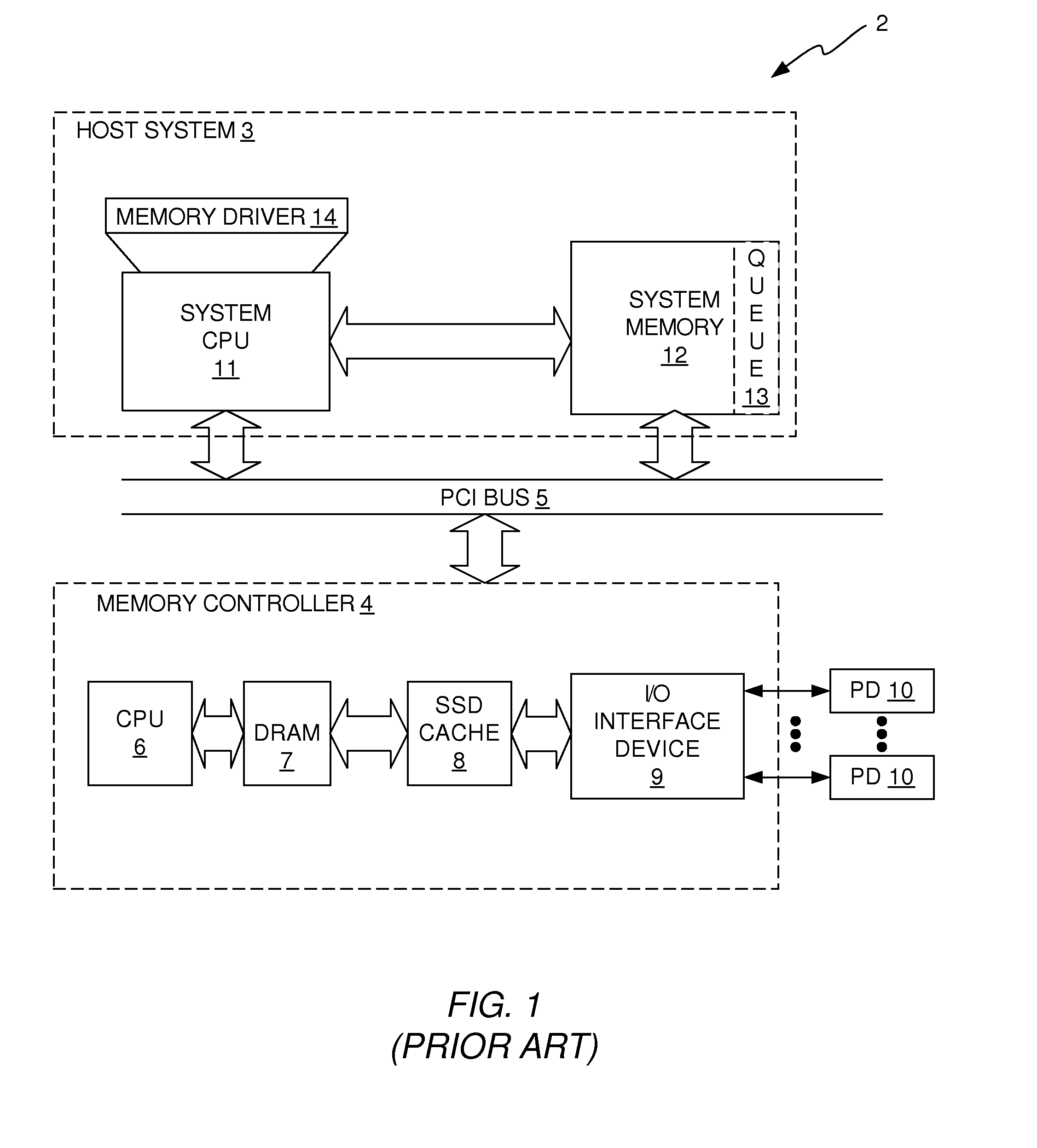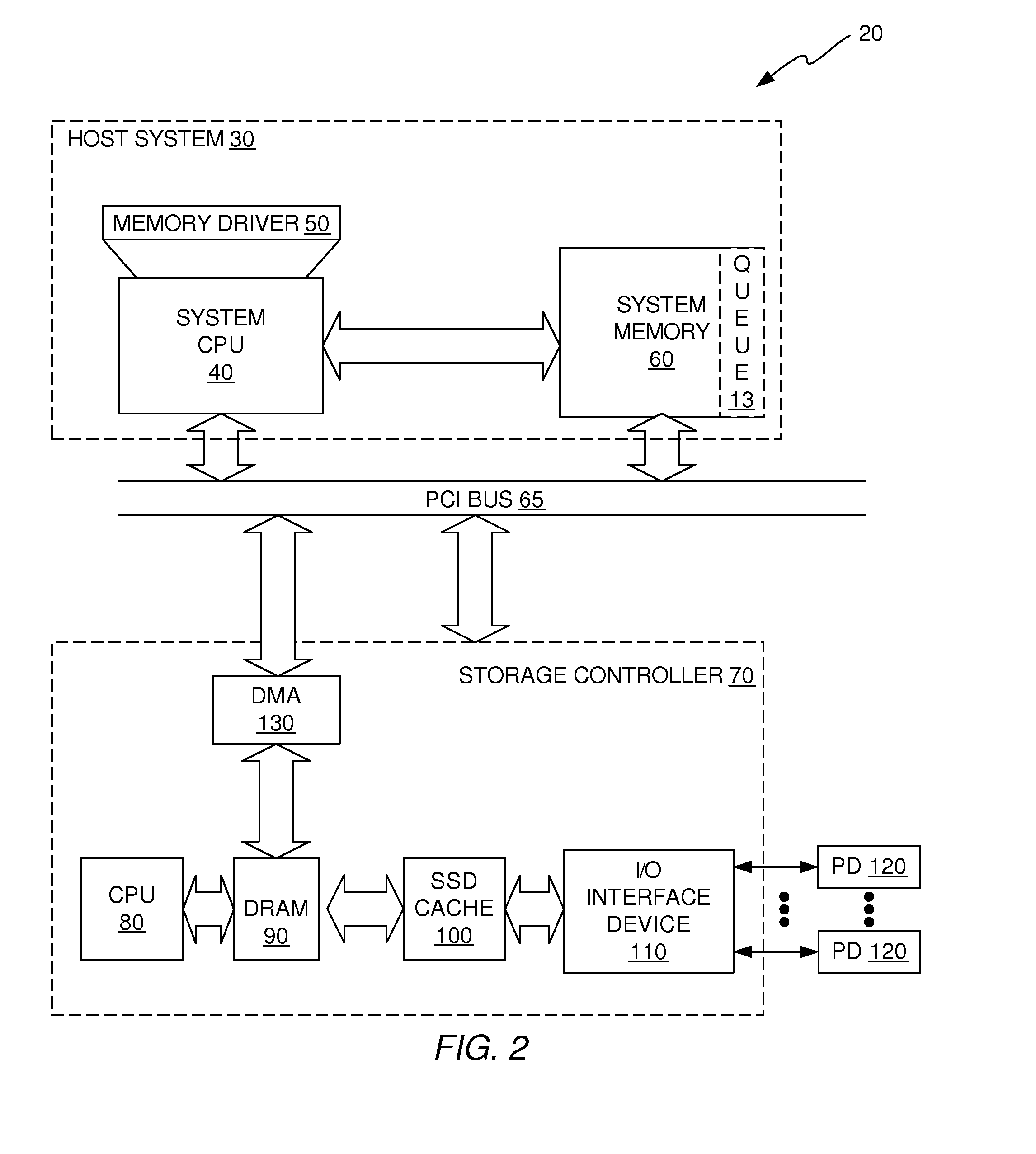Methods and systems for performing deduplication in a data storage system
a data storage system and data storage technology, applied in the field of data storage systems, can solve the problems of not all data lends itself, and difficult to achieve data deduplication
- Summary
- Abstract
- Description
- Claims
- Application Information
AI Technical Summary
Benefits of technology
Problems solved by technology
Method used
Image
Examples
Embodiment Construction
[0032]In accordance with illustrative embodiments described herein, a dedupe cache solution is provided that uses an in-line signature generation algorithm on the front end of the data storage system and an off-line dedupe algorithm on the back end of the data storage system. The front-end and back-end dedupe algorithms are stitched together in a way that provides very high dedupe efficiency. The in-line, front-end process includes a signature generation algorithm that is performed on the data as it is moved from the system memory device of the host system into the DRAM device of the storage controller. In addition, the front-end process indicates which signatures are associated with data that may be duplicates. Because the front-end process is an in-line process, it has very little, if any, detrimental impact on write latency and is scalable to storage environments that have high IOPS. The back-end deduplication algorithm looks at data that the front-end process has indicated may b...
PUM
 Login to View More
Login to View More Abstract
Description
Claims
Application Information
 Login to View More
Login to View More - R&D
- Intellectual Property
- Life Sciences
- Materials
- Tech Scout
- Unparalleled Data Quality
- Higher Quality Content
- 60% Fewer Hallucinations
Browse by: Latest US Patents, China's latest patents, Technical Efficacy Thesaurus, Application Domain, Technology Topic, Popular Technical Reports.
© 2025 PatSnap. All rights reserved.Legal|Privacy policy|Modern Slavery Act Transparency Statement|Sitemap|About US| Contact US: help@patsnap.com



